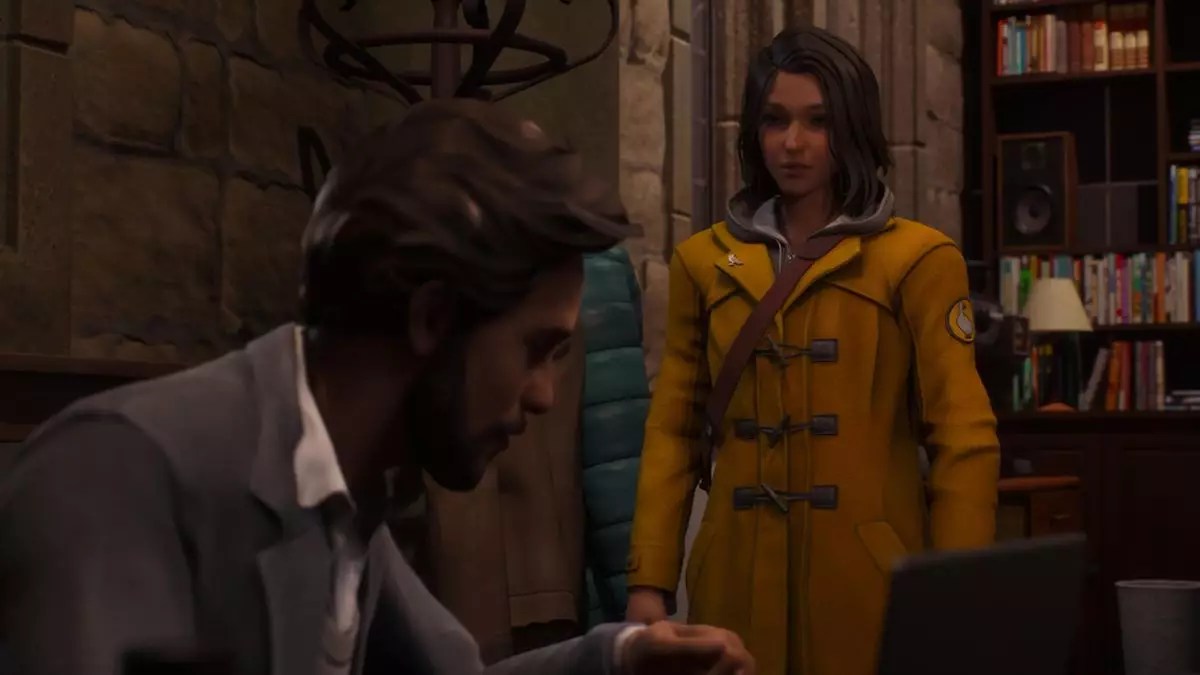Life is Strange: Double Exposure immerses players in a captivating narrative filled with suspense and intricate character relationships. One pivotal scene occurs in Lucas’ office, where players must uncover crucial evidence regarding the mysterious death of Maya Okada. This phase of the game is neither simple nor straightforward, and it requires keen observation and strategic thinking to piece together the underlying story and relationships that influence the characters in the narrative.
Max’s exploration of Lucas’ office reveals a rich tapestry of connections among characters that is forged through player choices. Prior interactions with Gwen, Yasmin, and Vinh significantly shape Max’s approach to Lucas, influencing the tone of their conversation and altering the player’s experience. Characters’ relationships are fluid and reflect the decisions players have made throughout the game, which adds a layer of complexity to the investigation process. Understanding these dynamics serves as a foundation for the player to approach Lucas’ office strategically, ensuring they don’t merely stumble upon evidence but are effectively guided by narrative context.
Once players finish their discussions in the Living World, they are ushered into the Dead World timeline by transitioning through a nearby Shift point. This change in environment offers a stark contrast, heightening the tension as the player prepares to delve into the secrets concealed within Lucas’ office. Upon entering, the atmosphere in the office is haunting and desolate, amplifying the sense of urgency that accompanies Max’s task of exploring Lucas’ past and his connections to Maya.
In this timeline, the number of interactive elements is substantial, making it crucial for players to methodically click through the environment. Scouring the office for not just tangible items but also narrative elements is key, as certain interactions reveal hidden dimensions of the characters involved.
Discovering the Hidden Truths
Max’s initial task involves rifling through a filing cabinet where the documentation reveals a striking correlation between Maya, Vinh, and Safi as classmates under Lucas’ tutelage. This discovery is poignant, as it not only establishes their relationship but also hints at darker undertones in Lucas’ behavior toward Maya. This parallels the emotional weight seen in previous installments of the Life is Strange series, reinforcing the game’s theme of troubled relationships and the harrowing consequences of buried secrets.
To further this investigation, players must contend with potential bugs that disrupt gameplay, such as failing to locate the key necessary for accessing further evidence. Such obstacles are frustrating but reflect the unpredictability of narrative-driven games. Players are advised to reload their previous save if they encounter issues, showcasing the often-tricky navigation these games present.
Once players locate the key hidden beneath a photograph, the game rewards their diligence. Unlocking the golden typewriter leads to a manuscript that reveals Lucas’ unethical actions, specifically his act of plagiarizing Maya’s work. This moment is pivotal, crystallizing the game’s central conflicts and character motivations. The juxtaposition of the manuscripts illustrates not only academic dishonesty but an exploitation of a tragic story. Such revelations potentiate Max’s journey, compelling players to explore the ethical ramifications of academics and relationships.
Climactic Confrontations and Their Aftermath
After collecting the necessary evidence, the narrative culminates in a heated confrontation between Max and Safi. This sequence underscores the emotional fallout of spreading sensitive information, highlighting the impact of gossip and the fragility of perceptions between characters. Players are confronted with the consequences of their prior decisions, showcasing how choices reverberate through the narrative landscape.
Lucas’ office serves as a microcosm of the deeper themes at play in Life is Strange: Double Exposure. Players are not merely collecting items but engaging with the emotional and ethical dimensions of their characters’ relationships. This intricate web of narrative and gameplay prompts players to consider the ramifications of their choices, making each discovery in Lucas’ office a vital part of the storytelling process. Navigating this part of the game may seem daunting, but it is ultimately rewarding—offering insights that resonate beyond the virtual world into real-life considerations of trust, betrayal, and the quest for truth.


Leave a Reply